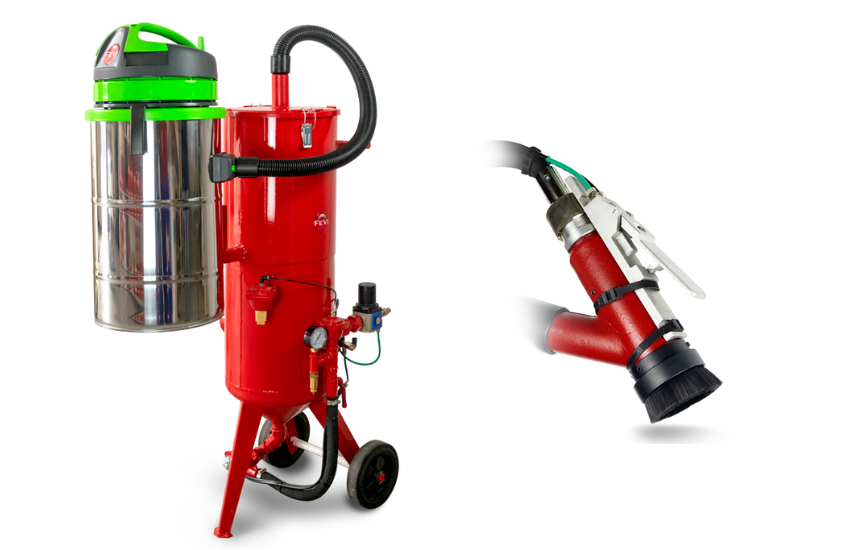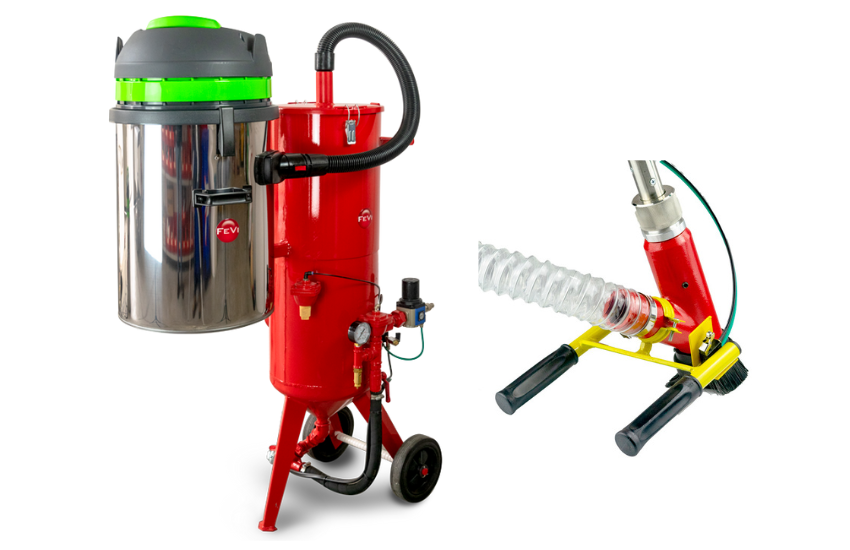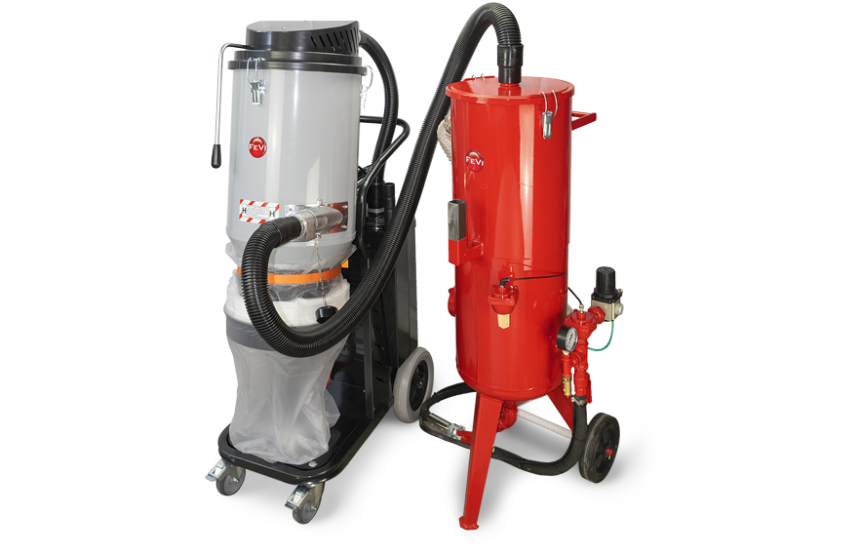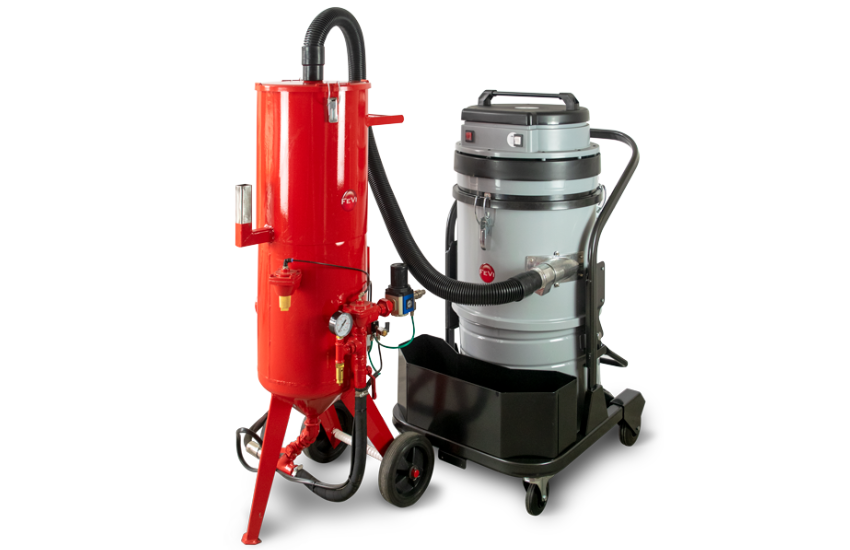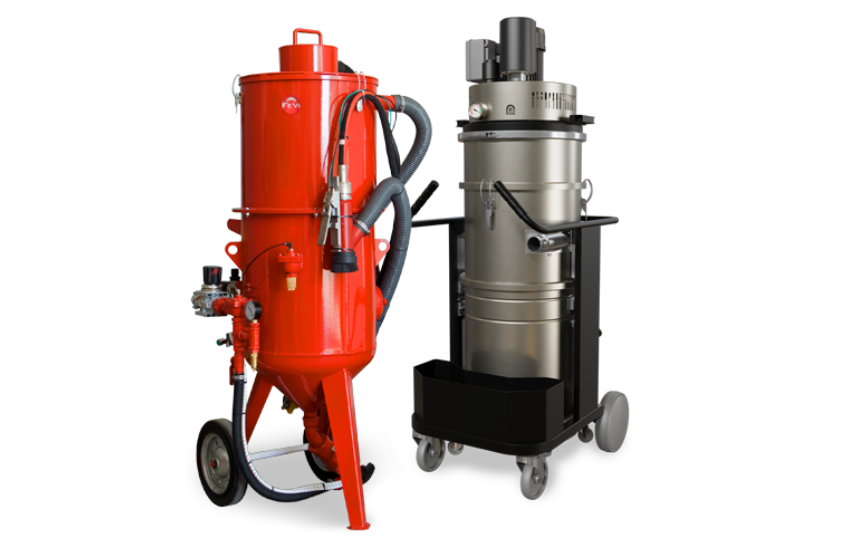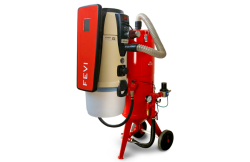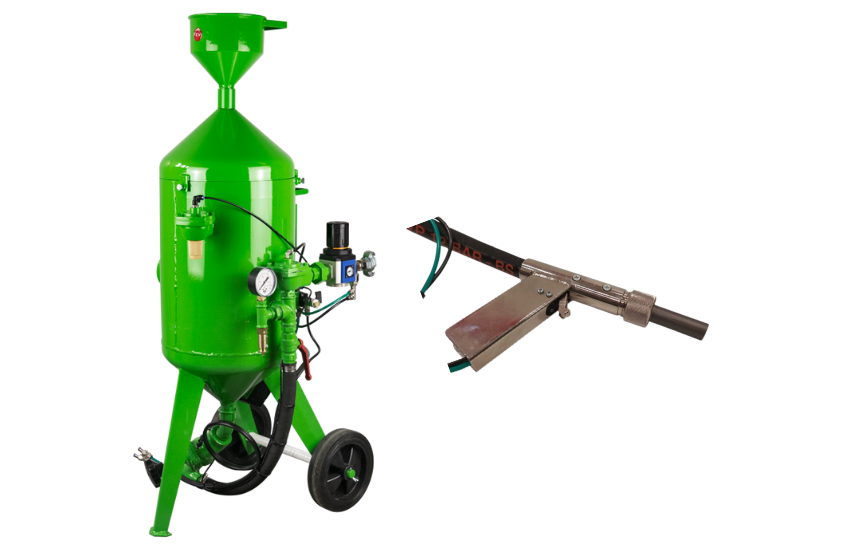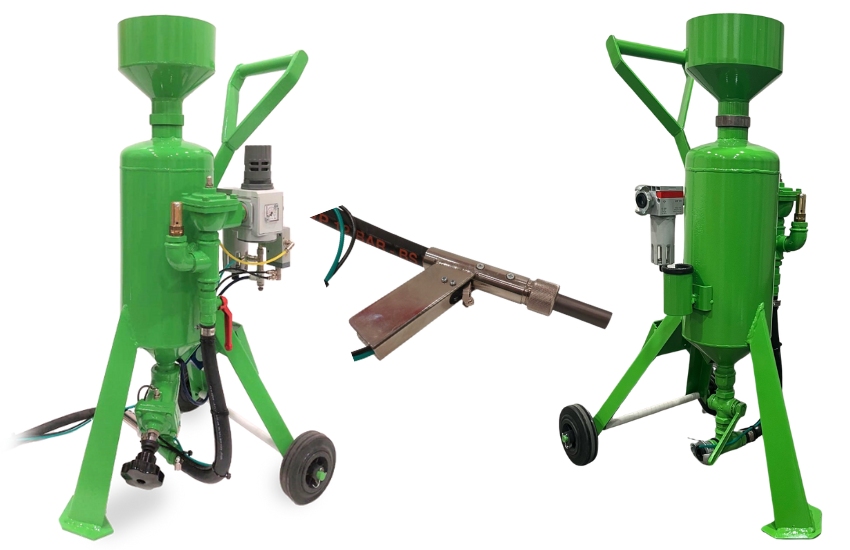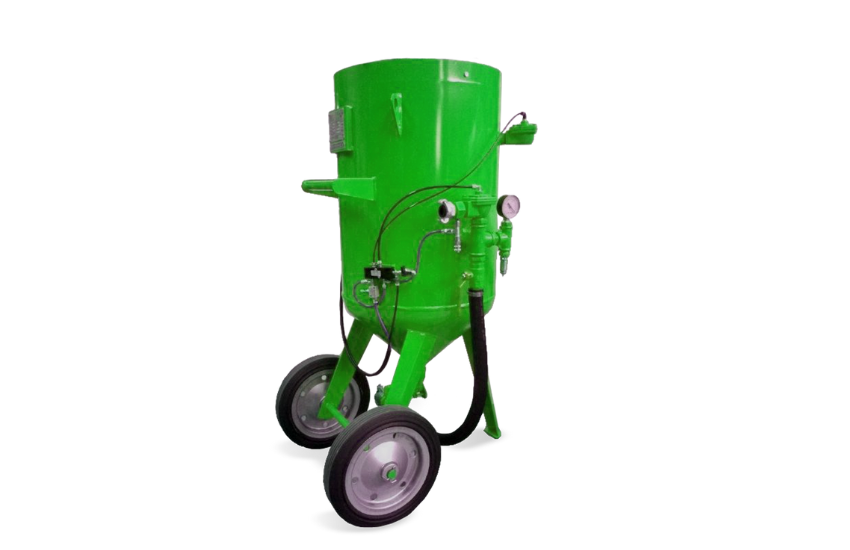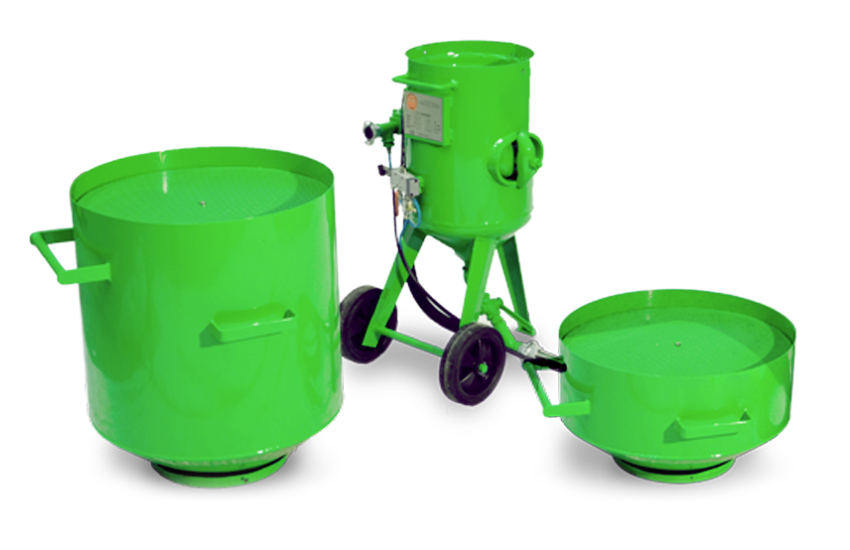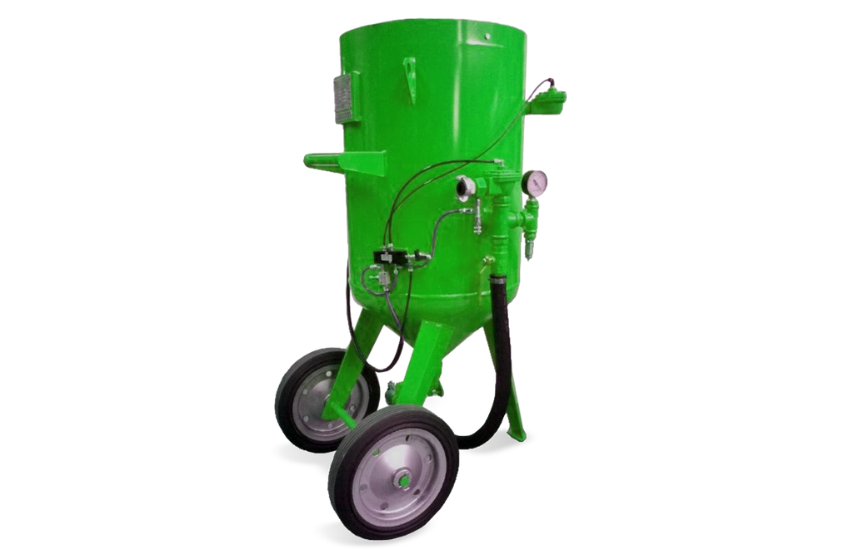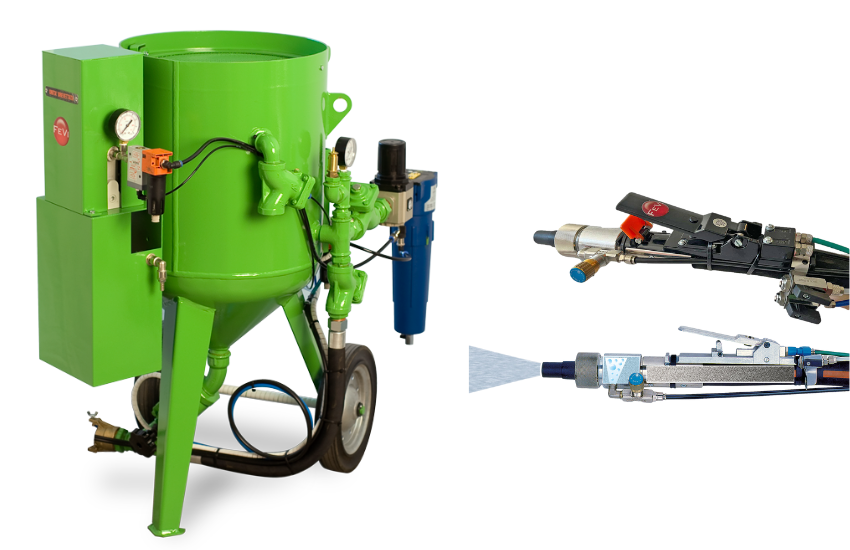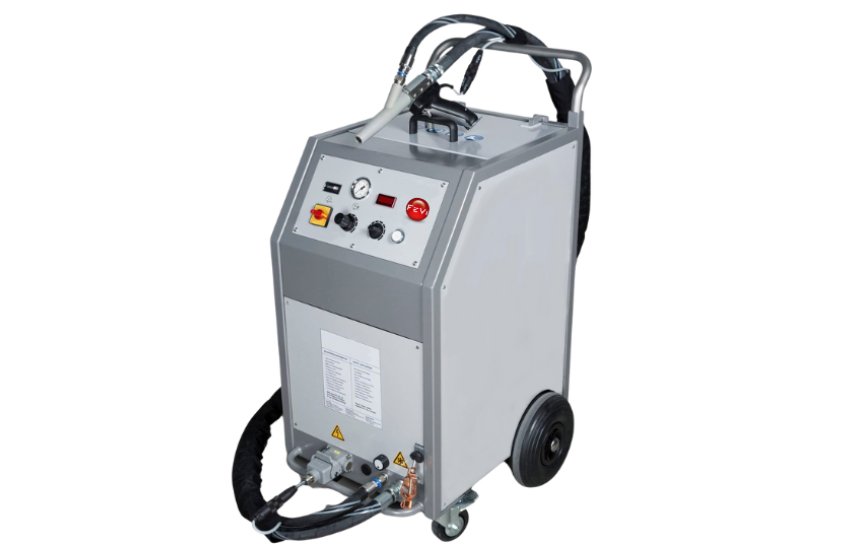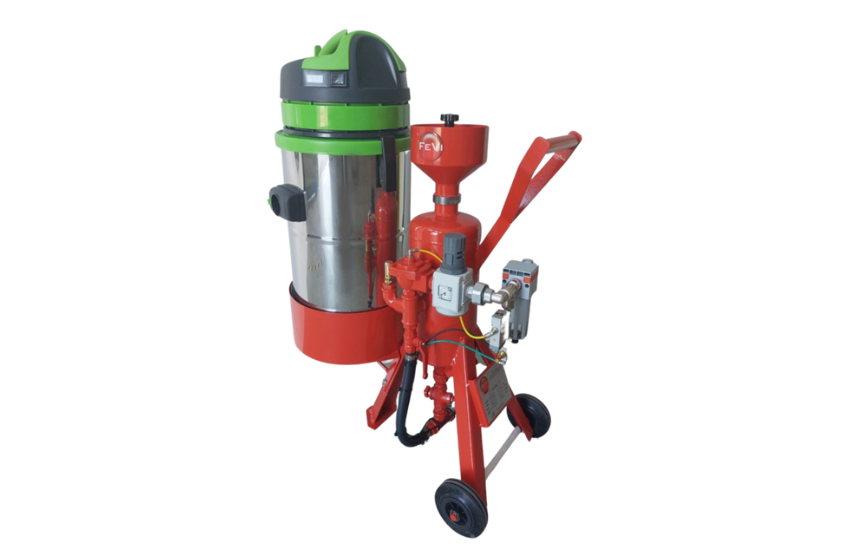Sandblasting is a crucial process in the preparation and treatment of surfaces across numerous industrial, construction, and restoration sectors. This method involves controlled abrasion of surfaces through a jet of high-velocity particles, which remove unwanted residues such as rust, paint, impurities, and various contaminants. Over the years, this technique has become one of the most effective methods for preparing surfaces for industrial painting, galvanizing, and zinc coating. Moreover, sandblasting not only enhances the aesthetics of surfaces but also optimizes their durability and resistance to environmental and wear factors.
The preparation of surfaces through sandblasting is particularly relevant for treating iron and stainless steel, materials widely used in sectors like construction, automotive, and marine, where robustness and corrosion resistance are essential requirements. Through the use of professional sandblasters with varying capacities, from 24 liters to 200 liters, it is possible to achieve precise and clean finishes on surfaces of varying complexity. For example, FEVI sandblasting machines are designed to meet different needs, ensuring uniform treatment without compromises in terms of quality and safety.
Furthermore, modern sandblasting technologies also include advanced processes such as shot peening, a method that hardens the metallic surface, increasing fatigue resistance and making surfaces more suitable for withstanding intense stress. This makes sandblasting not only a tool for aesthetic finishing but a fundamental component for improving the structural performance of materials, combining practicality and functional advantages.
For further details on the range of FEVI sandblasters, which meet specific professional needs in surface preparation, visit the FEVI sandblasters page.
Sandblasting Applications
Sandblasting is used across numerous industrial sectors thanks to its versatility and effectiveness. Below are some of the main applications:
1. Industrial Sector: Sandblasting is used to prepare metal components and machinery for treatments such as painting and protective coating. Sandblasting processes for iron and stainless steel are essential for ensuring a uniform and durable finish.
2. Construction and Restoration Sector: In the construction sector, sandblasting is essential for removing paints, graffiti, and impurities from facades, walls, and various surfaces. This treatment allows surfaces to be restored to their original state without damage.
3. Automotive and Marine Sectors: The use of professional sandblasters allows for the removal of rust and the restoration of metal and painted surfaces in the automotive and marine sectors. Sandblasting is ideal for restoring vintage vehicles, marine components, and surfaces exposed to extreme environmental conditions.
4. Industrial Painting and Coating: A well-prepared surface is essential for a uniform and durable paint application. Sandblasting removes any trace of dirt or corrosion, allowing the coating to adhere perfectly and providing greater long-term protection.
The Advantages of Sandblasting and Shot Peening
One of the main advantages of sandblasting is the ability to adapt the process to different types of materials and objectives, using specific equipment such as 24, 60, 120, and 200-liter sandblasters.
The range of FEVI sandblasters offers professional solutions capable of treating any type of surface, from metal to wall surfaces, including complex details such as cavities and shaped surfaces.
In particular, shot peening is a variant of sandblasting that uses metal spheres instead of traditional abrasives. This process is often used to increase the resistance of metallic materials and reduce the formation of microfractures, thus improving the durability and fatigue resistance of treated surfaces.
Other advantages of sandblasting include:
• Uniform surface preparation for paint, coating, and anti-corrosion treatments.
• Effective removal of rust and old paint without compromising the original surface.
• Controlled finish that can vary from smooth to slightly rough, depending on the adhesion needs for subsequent treatments.
For more information on choosing the sandblaster that best suits your needs, visit the dedicated section on FEVI sandblasters.
FEVI Sandblaster Range
FEVI offers a complete range of sandblasters that meet the varied needs of the industrial sector, from light use for small jobs to high-capacity professional sandblasters. The 24-liter sandblasters are ideal for precision work, while the 120 and 200-liter models are suitable for more intensive tasks in fields such as sandblasting for iron and stainless steel.
Each FEVI sandblaster is designed with the goal of providing excellent performance, long life, and maximum safety, and each model can be easily integrated into sandblasting systems with abrasive recovery systems, reducing waste and operational costs.
Visit the FEVI sandblasters page to discover the specifications of each model.
Conclusion: Tips for Industrial Sandblasting and Painting
To achieve the best results in industrial sandblasting and painting, it is advisable to follow some practices:
• Select the right abrasive: depending on the type of material and the desired finish level, choose between abrasives such as sand, metal spheres, or other specific materials.
• Adjust sandblasting pressure: set adequate pressure for the materials treated to avoid damage or uneven results.
• Use a sandblasting system with abrasive recovery: this helps to reduce long-term costs and minimize environmental impact.
• Regular equipment maintenance: the care and cleaning of sandblasters ensure optimal performance and extend the life of the equipment.
FEVI offers a range of sandblasters designed to meet these needs, ideal for professionals seeking quality and reliability.
For more information, visit our website and discover the full range of FEVI professional sandblasters.



